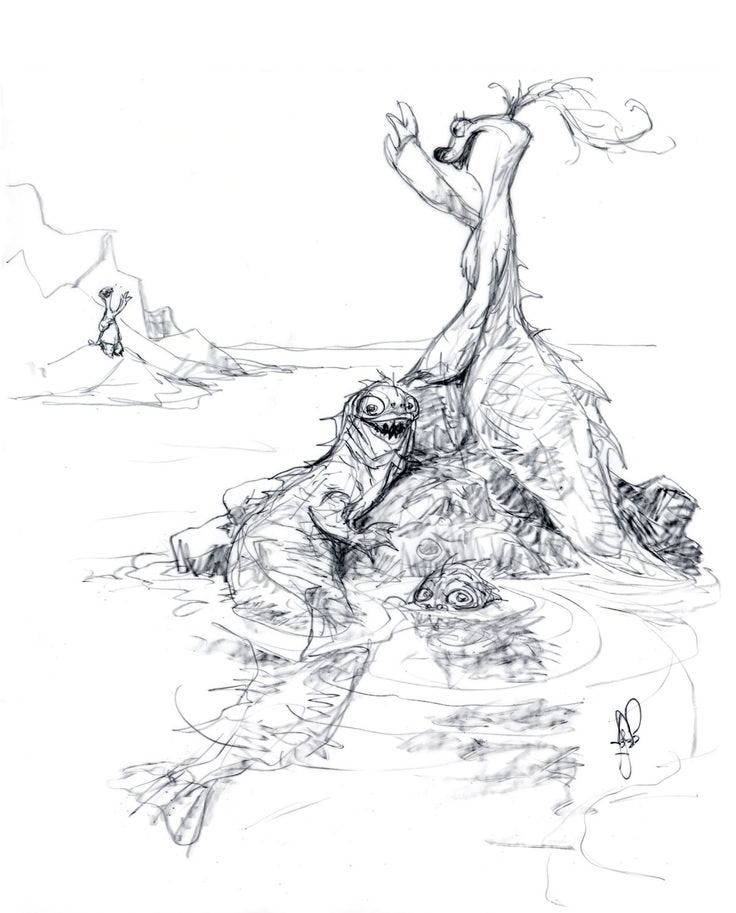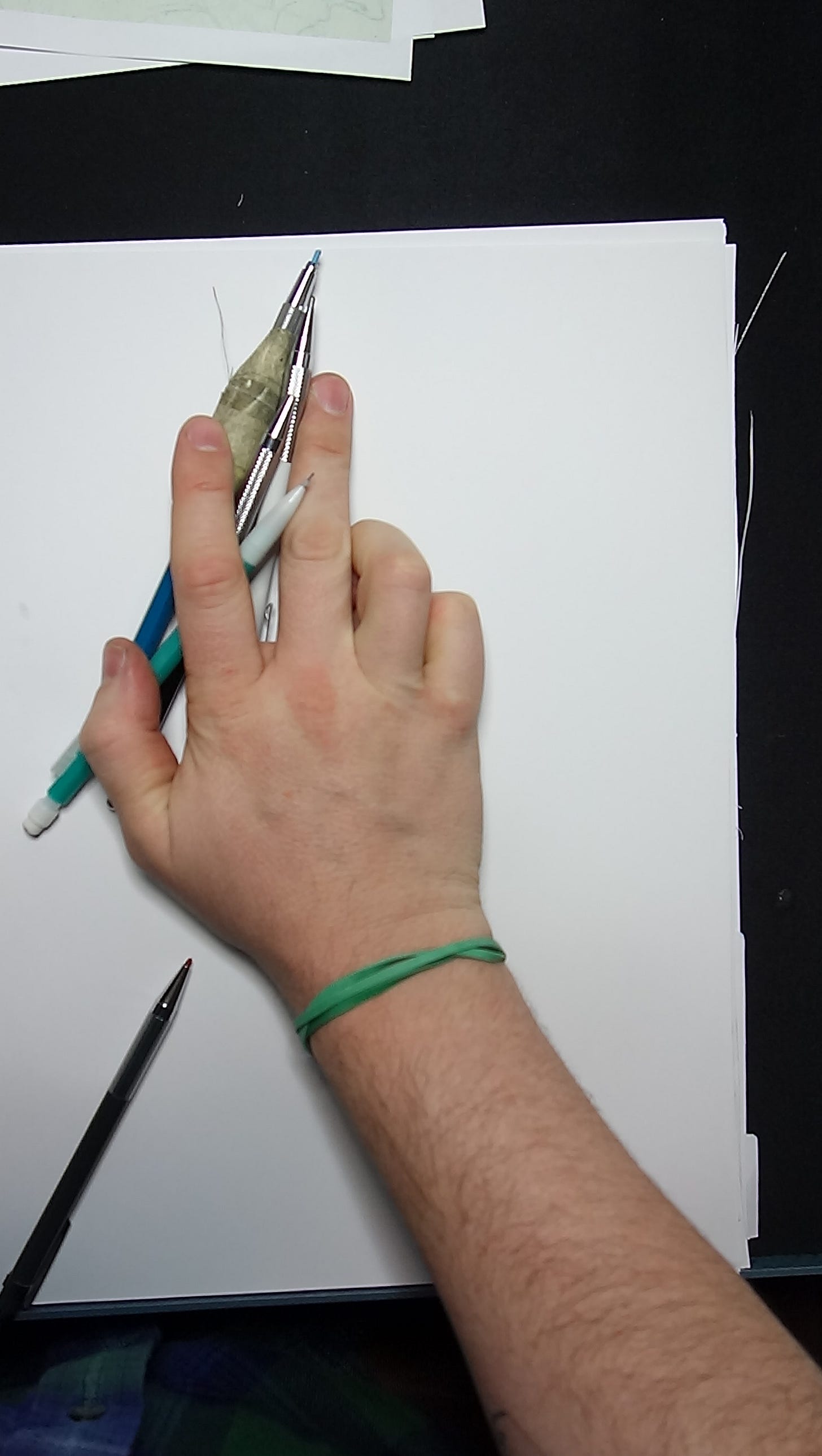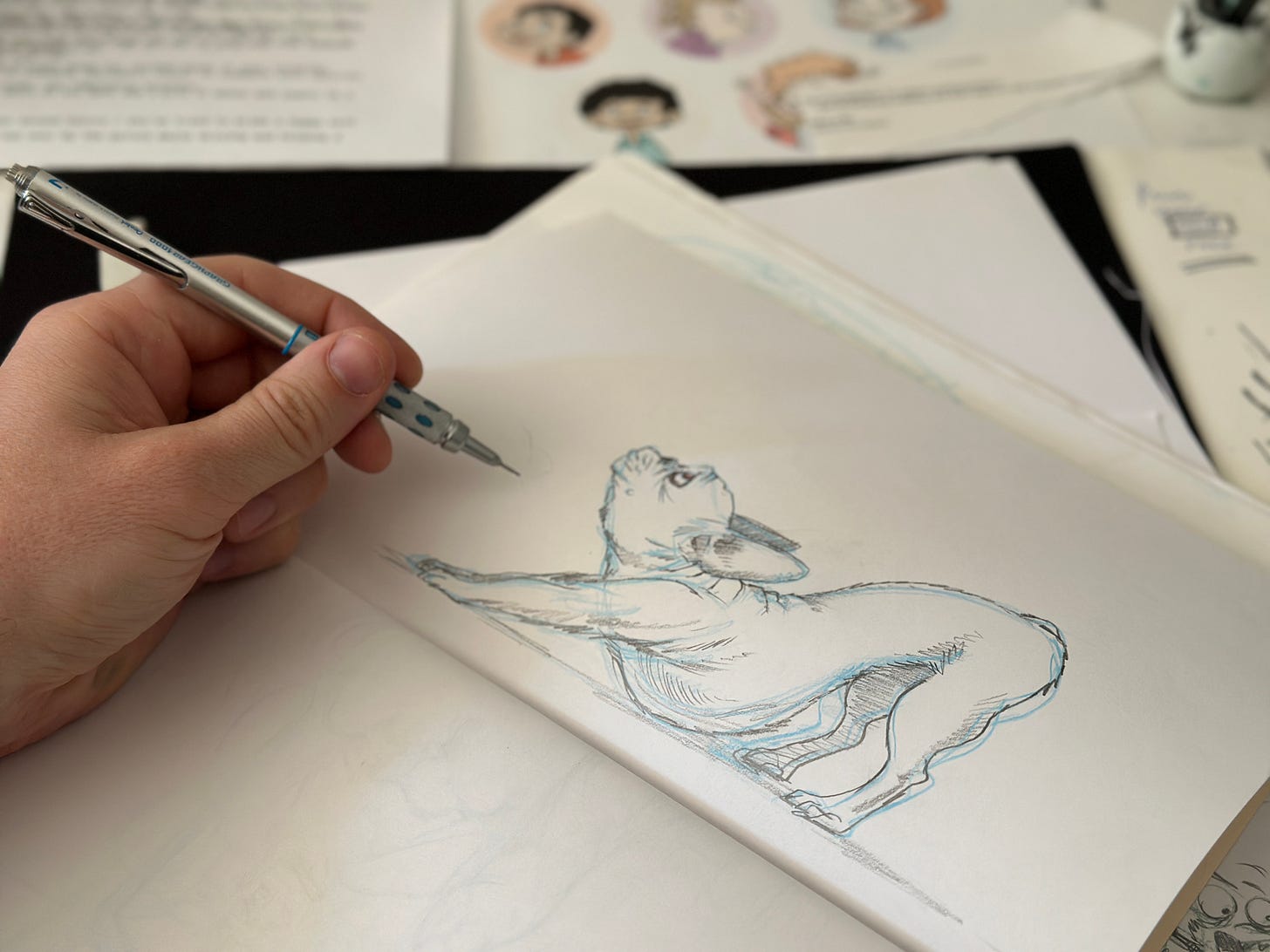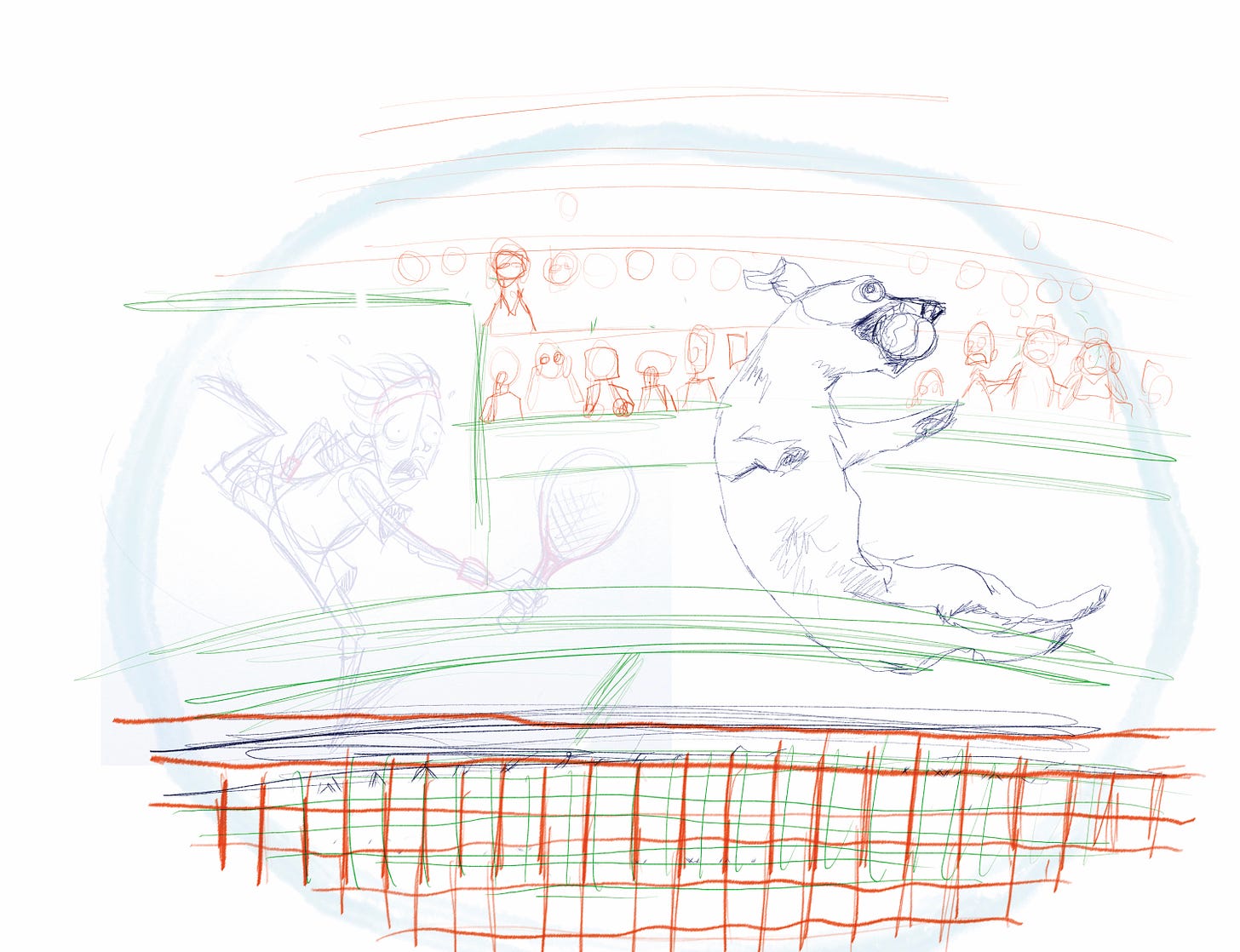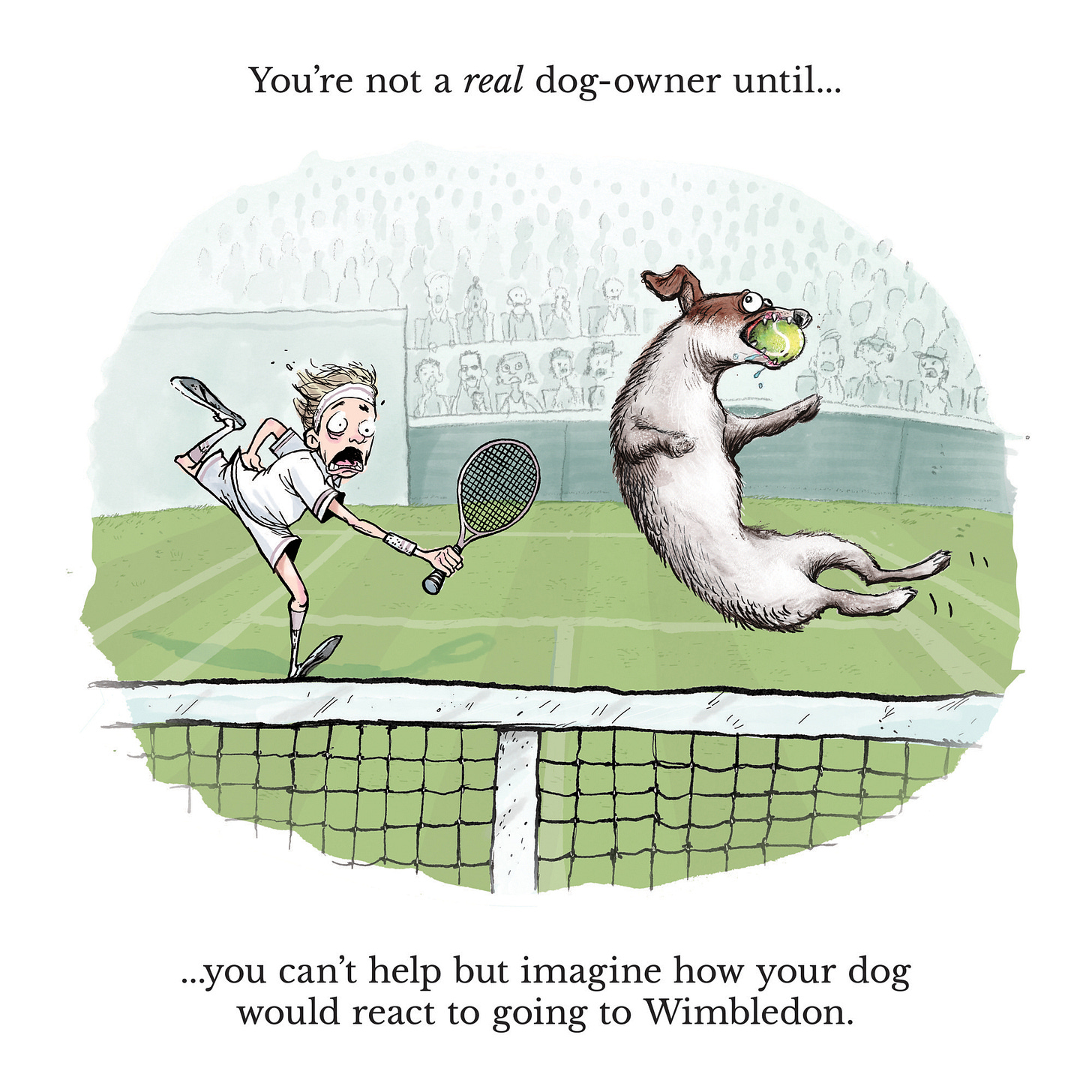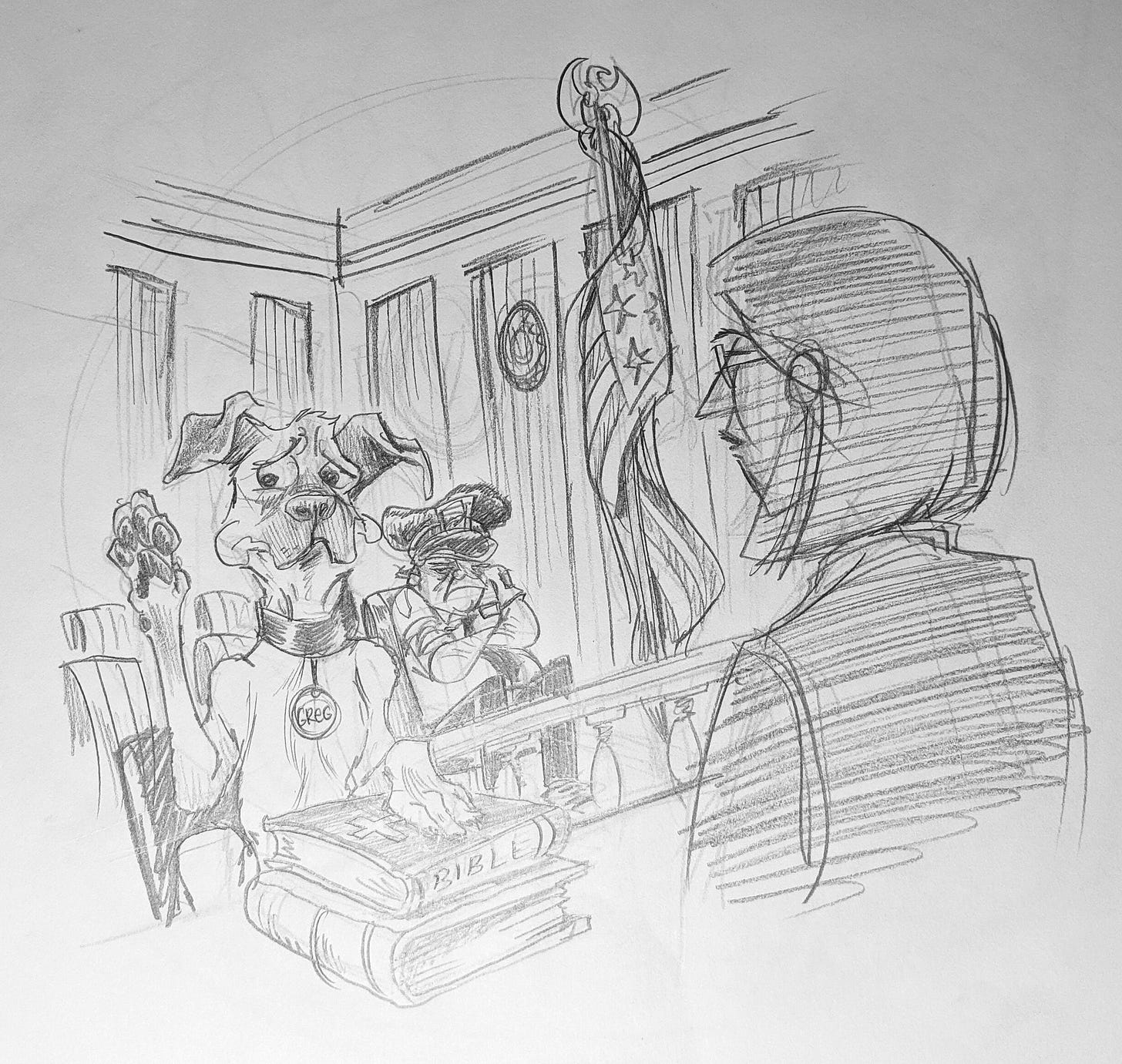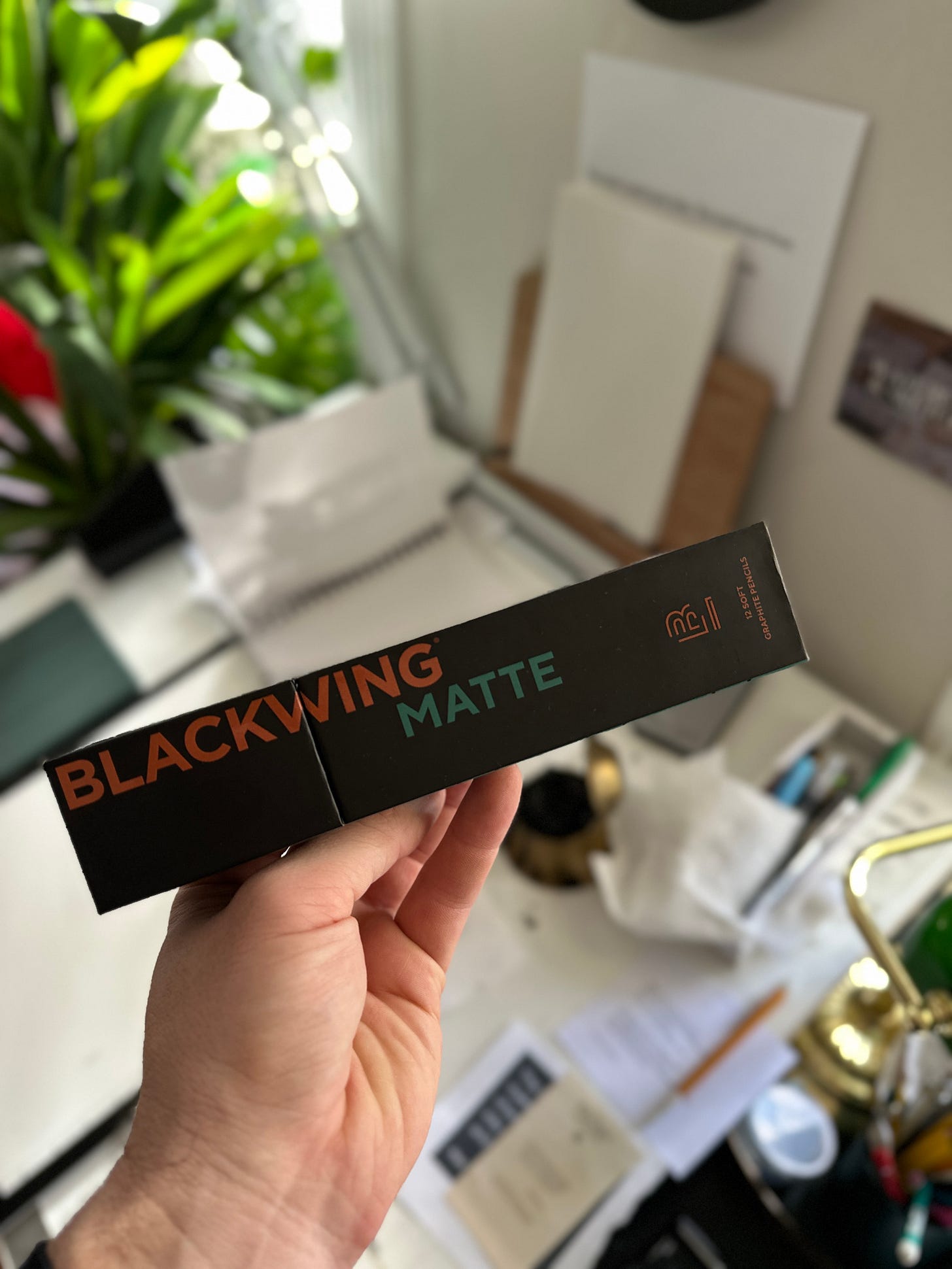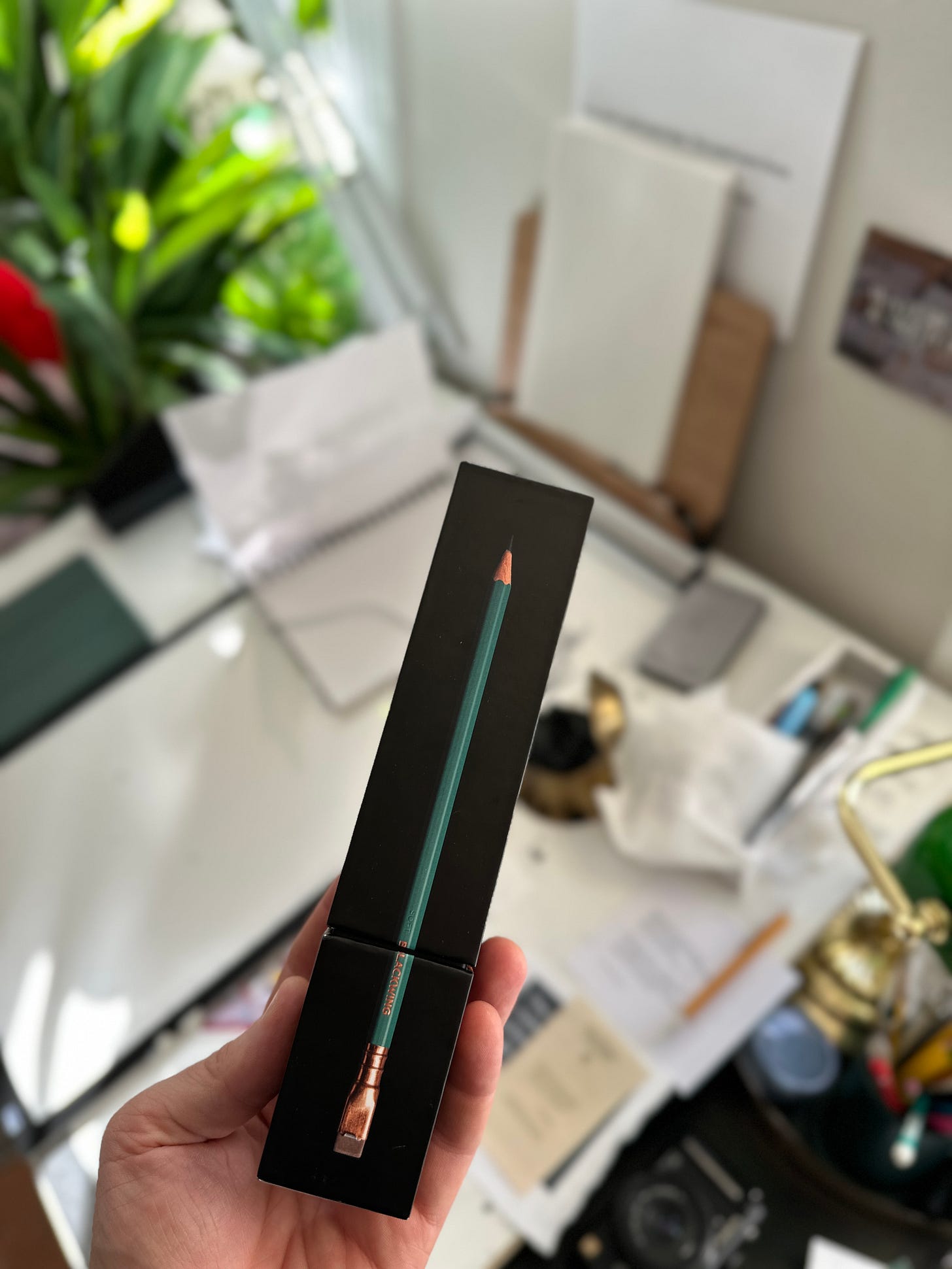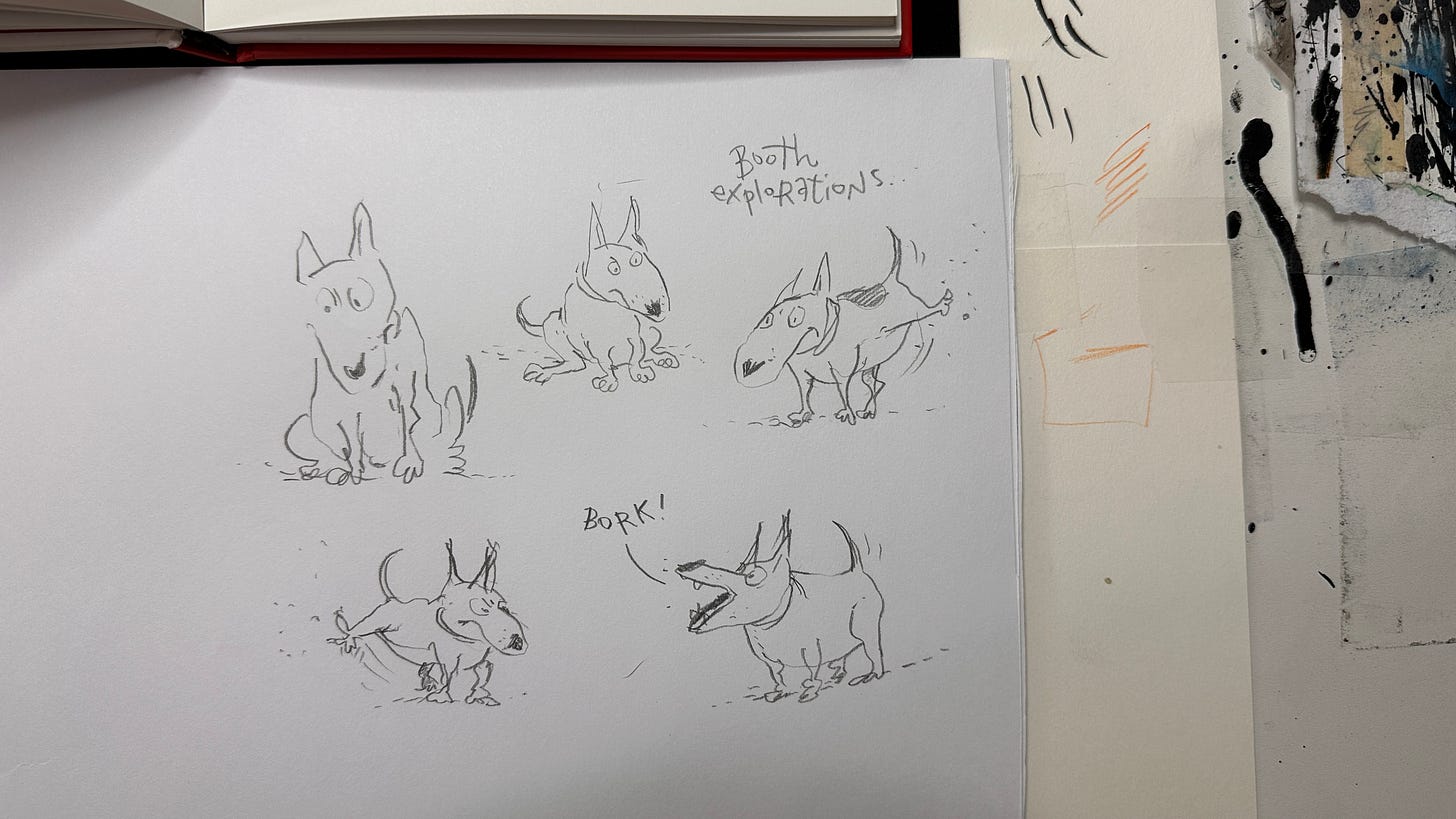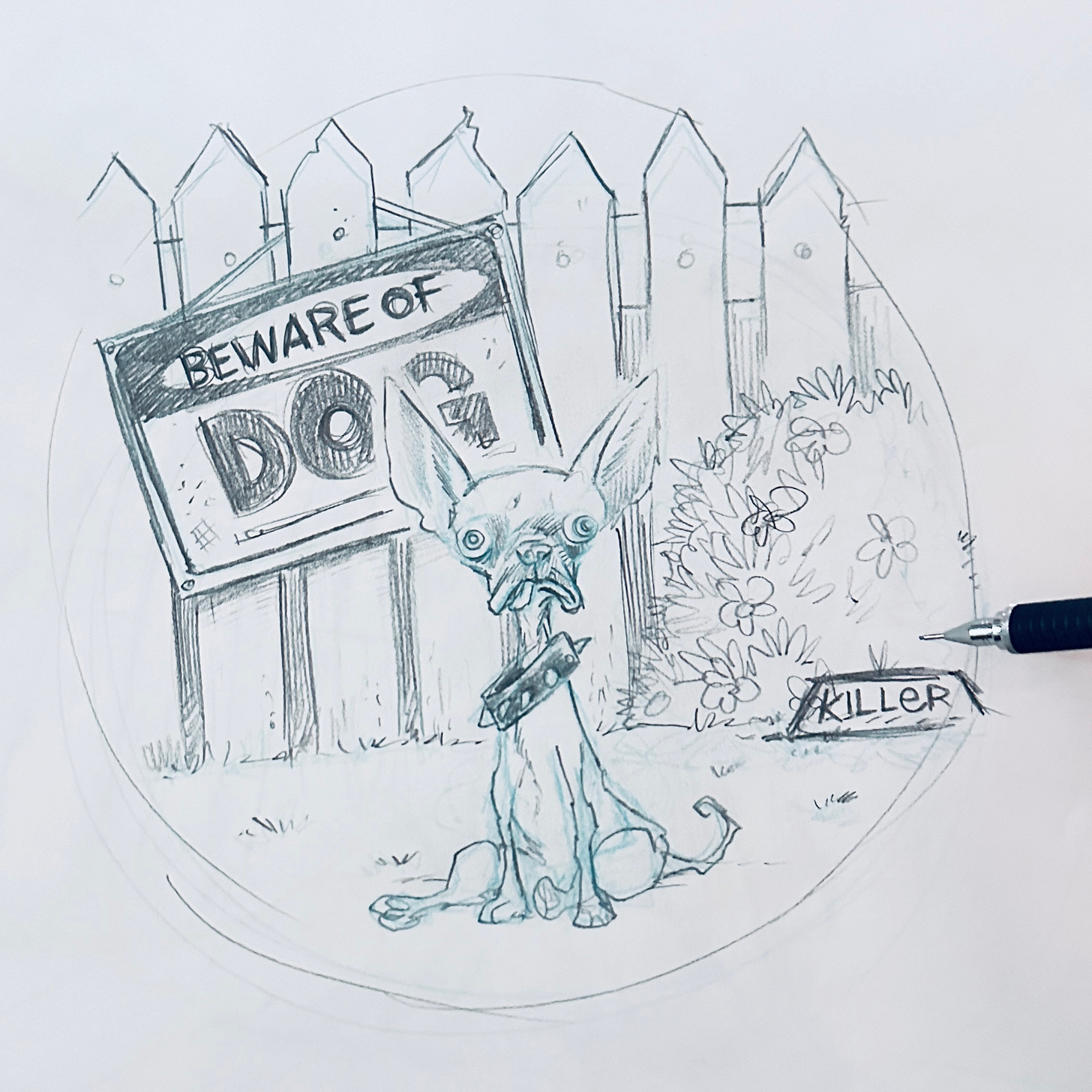Drawing is Thinking.
Today, I want to get back to basics— As you can see in the video above, today we’re going to look at the joy of pencils. It is one of the oldest tools in the drawing toolkit but easily one of the most dynamic and customizable.
Dave Gray, Founder of XPLANE and co-author of Gamestorming, describes sketching as “a conversation with yourself.” I always liked that idea— that when you’re actively letting an idea take shape in front of you, you’re no longer just noodling with amorphous shapes and ideas; you’re making decisions and negotiating with the page. It’s very much a conversation.
The pencil is a magnificent tool, capable of bringing any idea to life. Yes, I do know the story that “NASA Spent Millions to Develop a Pen that Would Write in Space, whereas the Soviet Cosmonauts Used a Pencil” — it is, alas, a myth, albeit a pretty fun one. I like it because it makes the simplicity of the tool the hero. It does one thing, and it does it well.
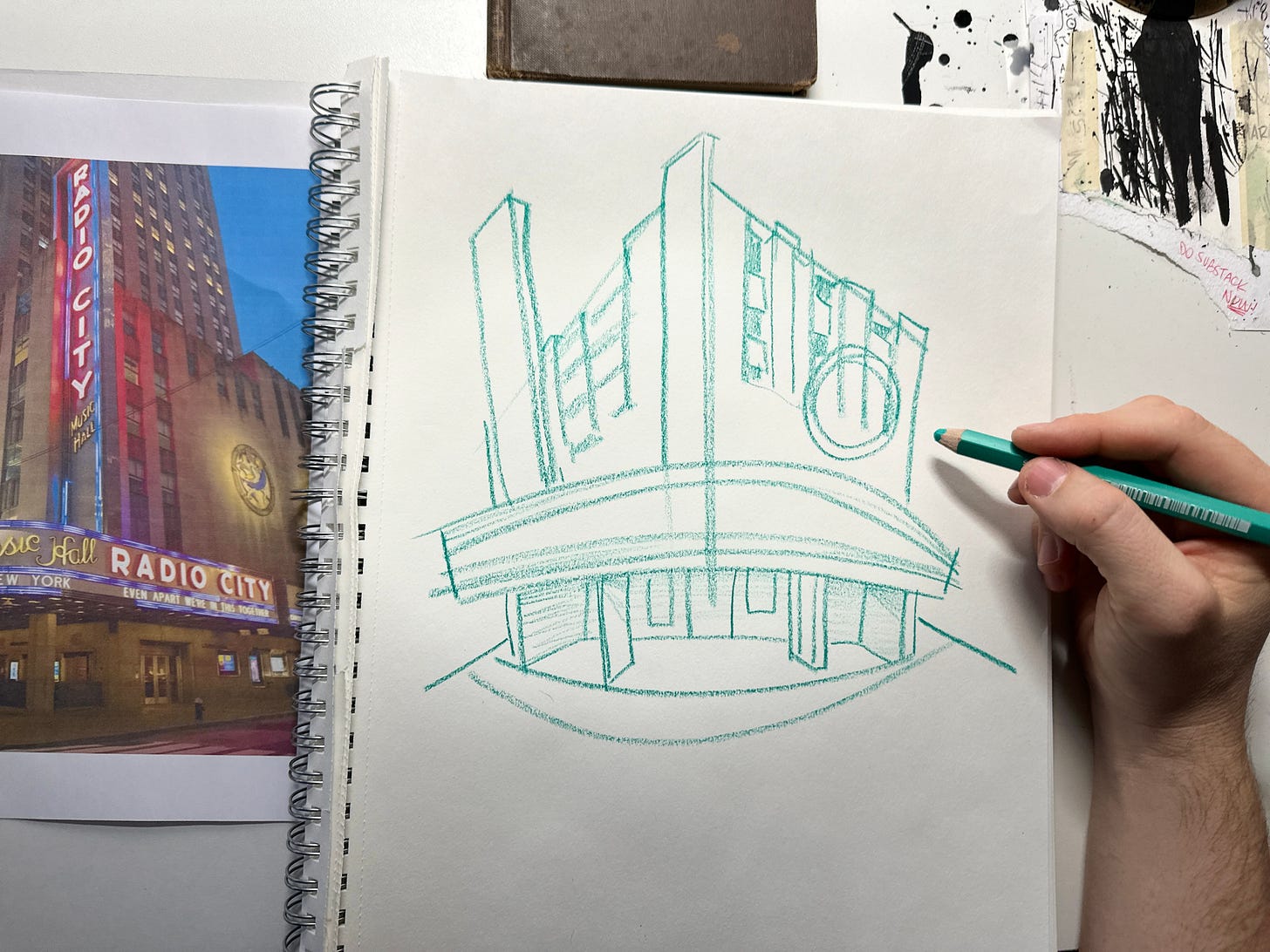
You can learn a lot by watching other artists sketch or studying their pencil roughs.
I remember seeing Peter DeSève sketching out a character from Ice Age in pencil and just watching the fluidity of his elbow and wrist and how he built these things out of nothing by finding relationships between shapes— adding and removing volume, finding balance in the composition in real-time. it was like watching a magic trick. At the exhibition of his work at the Philippe Labaune Gallery in New York, they showed some of the pencils of his New Yorker covers and character designs, all of which were utterly mesmerizing. I spent half a day in there poring over these explorations on paper and vellum. I much prefer seeing peoples’ pencils than their finished art. (See below).
Page before Pixels?
One thing I’ve always stressed to beginner artists is the skill of working things out on a page in pencil before you jump to digital. Yes, digital pencils are useful when you’re working out compositions, shifting layers and working with an Art Director or client in iterating an idea, but the initial stage of getting the page from your mind into the world is best done at the drawing board— a skill only developed by doing repeatedly, using whichever version of a pencil you’re comfortable with.
Mechanical, Traditional, and everything in between.
I use different kinds of pencils for different kinds of projects. I have different leads for roughing out compositions that I might be inking over (ie. using non-photo blue) or for when I’m building an idea up in stages and levels, so I can differentiate the different areas of the composition. For this, I use a mechanical pencil (you can see the specific kinds of mechanical pencils I use here.)
Am I against doing digital pencils?
Absolutely not. In fact, sometimes, it’s one of the best ways to work out an idea. I’ve included my digital pencils for both Photoshop and Procreate in your premium subscriber bundle folder. Let me know what you think of them. (or upgrade to access the folder.)
I sometimes layer differently-coloured pencil layers in Photoshop or Procreate to figure things out on the screen the same way I do on the page. It depends entirely on the project, the workflow, the rounds of feedback and the amount of people involved in the Process.
Above is a rough digital pencil composition for a page from my upcoming book about dogs. I switched out the tennis player a few times, as well as the dog— I had different kinds of breeds of dog to see which would be the funniest for this gag. (We landed on Jack Russell in the end.)
However, the other thing about working things out on paper as opposed to a digital screen, is the tactile sense of putting your hand and mind to work in sync. There’s a very distinct feeling you get when working with tangible tools as opposed to a stylus on a screen— they’re not ‘better or worse’ they’re just different.
My preference is to work it out using real-world tools whenever I can. Sometimes, I even produce the finished art in pencil if the assignment allows. I love the work of Harry Bliss in the New Yorker, which really reproduces that pencil texture nicely in print.
Flight of the Blackwing
I’ve been drawing with these for two weeks, and I think I’m in love. The leads are the perfect softness, the balance of the pencil is just right, and the eraser is more precise than anything else I’ve got lying around. I have no idea how long this affair will last, but at the moment, things are going well, and I’m hoping this box of their new Matte Greens lasts me for the rest of the year.
(Full Disclosure: They haven’t paid me to plug their products. However, they recently gifted me this box at an event in NYC. Even so, I would have bought these eventually.)
There’s also something about exploring the design of other artists and how they use pencils that can be a really helpful way to expand your visual vocabulary. They may use the tools in a way you wouldn’t have thought of, or created an effect by holding the pencil a certain way. Above, I was playing with some ideas on getting the expressive motion of dogs through the —admittedly inimitable— George Booth’s book “About Dogs”. I think he might have been the best artist to capture dogs using any tool, let alone pencils. (Related: Read Roz Chast’s recent post for the New Yorker on Booth’s cartoons here.)
I do end up scanning pencils in* to bring them to photoshop to ink when I’m looking to produce something replicable and consistent— for a book or a comic strip that needs to have consistent line-weights. *Sometimes I just take a photo with my phone which is usually enough.
Keep reading with a 7-day free trial
Subscribe to Process Junkie to keep reading this post and get 7 days of free access to the full post archives.





